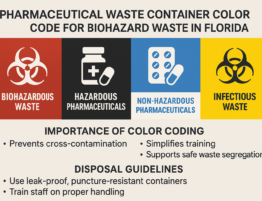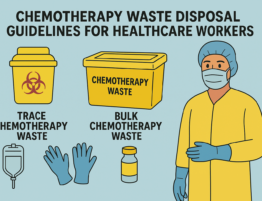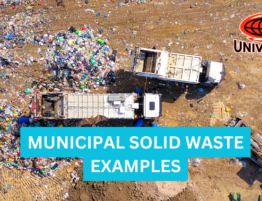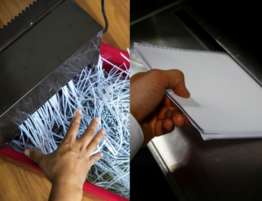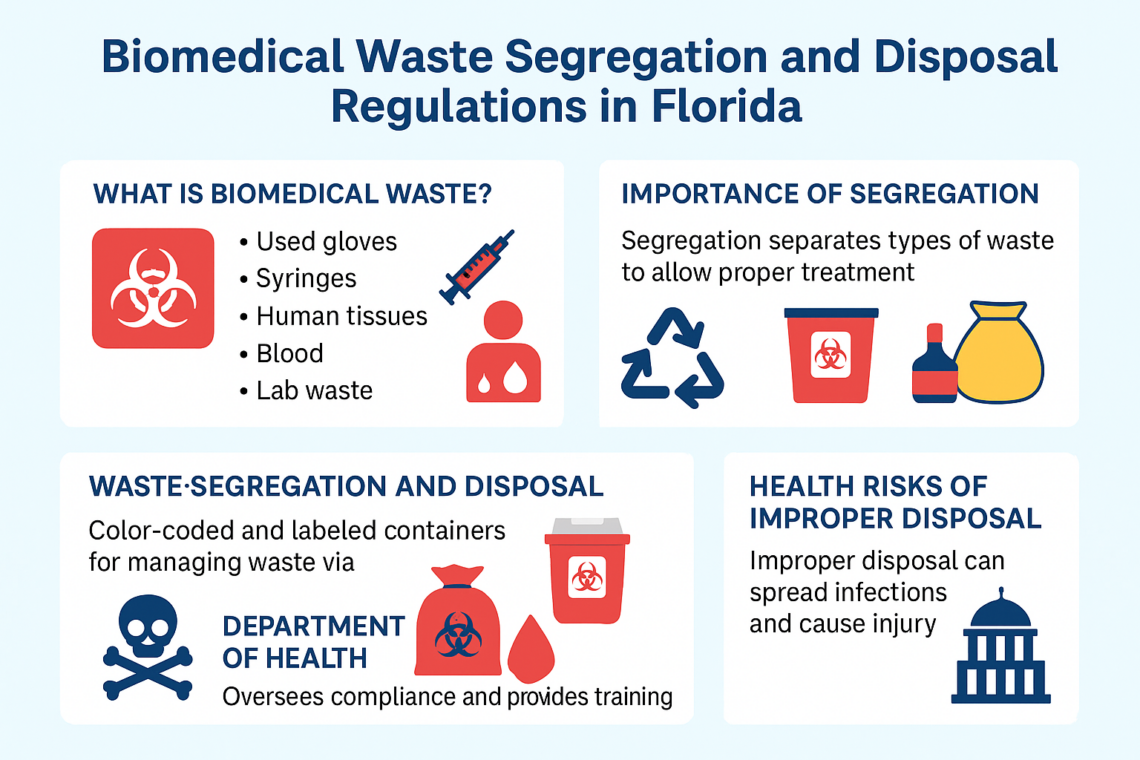
Biomedical Waste Segregation and Disposal Regulations in Florida
Biomedical waste is not like regular trash. It includes anything that could be harmful to people or the environment, like used needles, blood-soaked bandages, or lab samples. If not handled properly, this waste can spread infections or hurt someone. That’s why biomedical waste segregation and disposal regulations in Florida are so important.
Florida takes biomedical waste very seriously. The state has rules in place to make sure that this kind of waste is separated, stored, treated, and thrown away safely. These rules help protect the public, healthcare workers, and our environment. Let’s break down what these rules are, how they work, and why following them matters.
What Is Biomedical Waste?
Biomedical waste is any waste that comes from healthcare or medical research. This includes hospitals, clinics, dental offices, nursing homes, and even veterinary clinics. Examples of biomedical waste are:
-
Used gloves and masks
-
Syringes and needles (called sharps)
-
Human tissues or body parts
-
Blood or other body fluids
-
Laboratory waste
Florida’s regulations are designed to handle all of these safely. But first, we need to understand what is segregation of biomedical waste and why it’s the first step.
What Is Segregation of Biomedical Waste?
Segregation of biomedical waste means separating different types of waste at the time it is created. This makes it easier to treat and dispose of each kind of waste properly. For example, sharp objects like needles need to go into strong, puncture-proof containers. Bandages and gloves go into red biohazard bags.
The idea is to keep hazardous waste away from regular trash. This protects workers who collect and handle the garbage. It also reduces the chance of dangerous materials ending up in landfills or water sources. In Florida, segregation is required by law for any facility that produces biomedical waste.
What Is Waste Segregation and Disposal?
What is waste segregation and disposal? It’s a two-part process. First, segregation means sorting waste into categories—like sharps, infectious waste, or general medical trash. Then, disposal means getting rid of each category the right way.
In Florida, biomedical waste has to be placed in labeled containers. These containers are color-coded, leak-proof, and marked with the biohazard symbol. After segregation, the waste is either treated on-site or picked up by licensed companies. These companies then follow strict rules for safe transportation and final disposal.
Why Is Proper Biomedical Waste Management Important?
Improper biomedical waste disposal can cause serious problems. Workers can get injured by used needles or infected by viruses and bacteria. Harmful chemicals can leak into the soil or water, affecting animals and plants.
In Florida, where tourism and natural beauty are important, keeping the environment clean is a big deal. That’s why the state enforces its biomedical waste segregation and disposal regulations so carefully. Hospitals, clinics, and even tattoo shops must follow the rules or face fines and penalties.
Who Oversees Biomedical Waste Regulations in Florida?
In Florida, the Department of Health (DOH) is in charge of overseeing biomedical waste. They make sure that healthcare providers, waste transporters, and disposal companies follow the state’s rules. The DOH also offers training programs, inspections, and resources to help businesses stay compliant.
All facilities that create biomedical waste must register with the DOH and follow the Florida Administrative Code, Chapter 64E-16. They must also keep records of how much waste they generate and how it is treated or disposed of.
Color Codes and Labels for Biomedical Waste
To make segregation easier, Florida uses specific colors and labels for biomedical waste:
-
Red bags: For infectious waste like bloody bandages and gloves
-
Sharps containers: Puncture-proof boxes for needles, lancets, and broken glass
-
Biohazard symbol: Must be visible on all containers
-
Labels: Must include the facility’s name, address, and date
This system makes sure everyone knows what kind of waste they are handling. It’s also useful during inspections and helps prevent accidents.
What Are the Methods of Disposal of Biomedical Waste?
So, what are the methods of disposal of biomedical waste in Florida? The state allows several approved ways:
-
Autoclaving: A high-pressure steam method that kills germs and makes waste safe to throw away.
-
Incineration: Burning waste at very high temperatures. This method is often used for sharps or body parts.
-
Chemical treatment: Adding chemicals to destroy dangerous materials.
-
Microwave treatment: Using heat waves to disinfect waste.
-
Landfilling (after treatment): Only treated biomedical waste can be placed in approved landfills.
Each method must meet state standards. Facilities must keep proof that the waste was treated correctly and disposed of in a legal way.
Staff Training and Safety Measures
Employees who handle biomedical waste must be trained every year. Florida requires that they understand:
-
How to identify and segregate waste properly
-
How to wear protective gear (like gloves and goggles)
-
How to use containers safely
-
What to do if there is a spill or injury
Training helps reduce accidents and keeps everyone safe. Facilities must keep training records on file and show them during inspections.
Storage and Transportation Rules
Biomedical waste must be stored securely before it is treated or picked up. Florida law says:
-
Waste should not be stored for more than 30 days.
-
Storage areas must be clean and closed off to the public.
-
Containers must be in good condition and closed at all times.
When transporting biomedical waste, only registered and licensed companies can do the job. Trucks must be marked with warning signs, and drivers must be trained in case of emergencies. All of this ensures the waste does not pose a risk while being moved.
What Are the 5 R’s of Waste Segregation?
To remember how to deal with all kinds of waste, not just biomedical, people often use the 5 R’s of waste segregation:
-
Refuse: Say no to waste you don’t need (like single-use plastics).
-
Reduce: Use less to create less waste.
-
Reuse: Find new ways to use items instead of throwing them away.
-
Repurpose: Turn waste into something useful.
-
Recycle: Send waste to be turned into new materials.
Understanding these principles starts with knowing what are the 4 types of waste? a helpful guide for managing different waste streams effectively.
Inspections and Penalties
Florida does regular inspections of facilities that handle biomedical waste. Inspectors look for:
-
Proper segregation and labeling
-
Safe storage conditions
-
Up-to-date training records
-
Proper disposal documentation
If a facility breaks the rules, they can be fined or even shut down. This strict system helps make sure that all biomedical waste is handled safely.
How You Can Help
Even if you don’t work in a medical setting, you can still help. If you use needles at home for diabetes or other reasons, make sure to use a sharps container and follow local drop-off rules. Don’t put medical waste in your regular trash.
If you run a small business like a tattoo shop or a veterinary clinic, make sure you understand Florida’s biomedical waste segregation and disposal regulations. It’s not just about following the law—it’s about keeping people and the planet safe.
Final Thoughts
Biomedical waste segregation and disposal regulations in Florida are designed to protect health, safety, and the environment. From hospitals to home care, proper waste handling is everyone’s responsibility. By understanding what is segregation of biomedical waste, knowing what is waste segregation and disposal, and using the right disposal methods, we can reduce risks and keep Florida clean and safe.
Following the 5 R’s of waste segregation also reminds us to be mindful of how we manage all types of waste. With clear rules, proper training, and good habits, we can all play a part in safe biomedical waste management.

